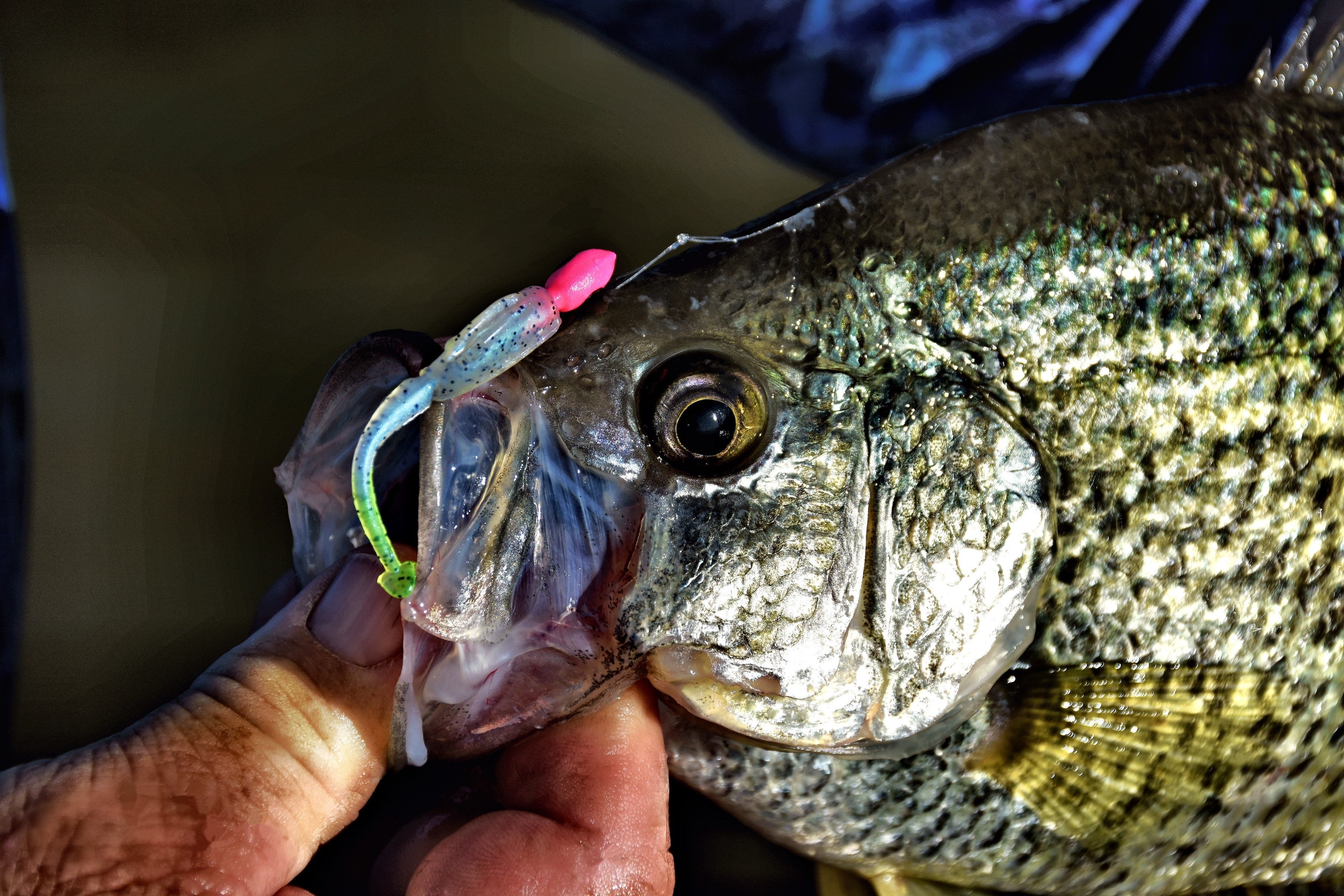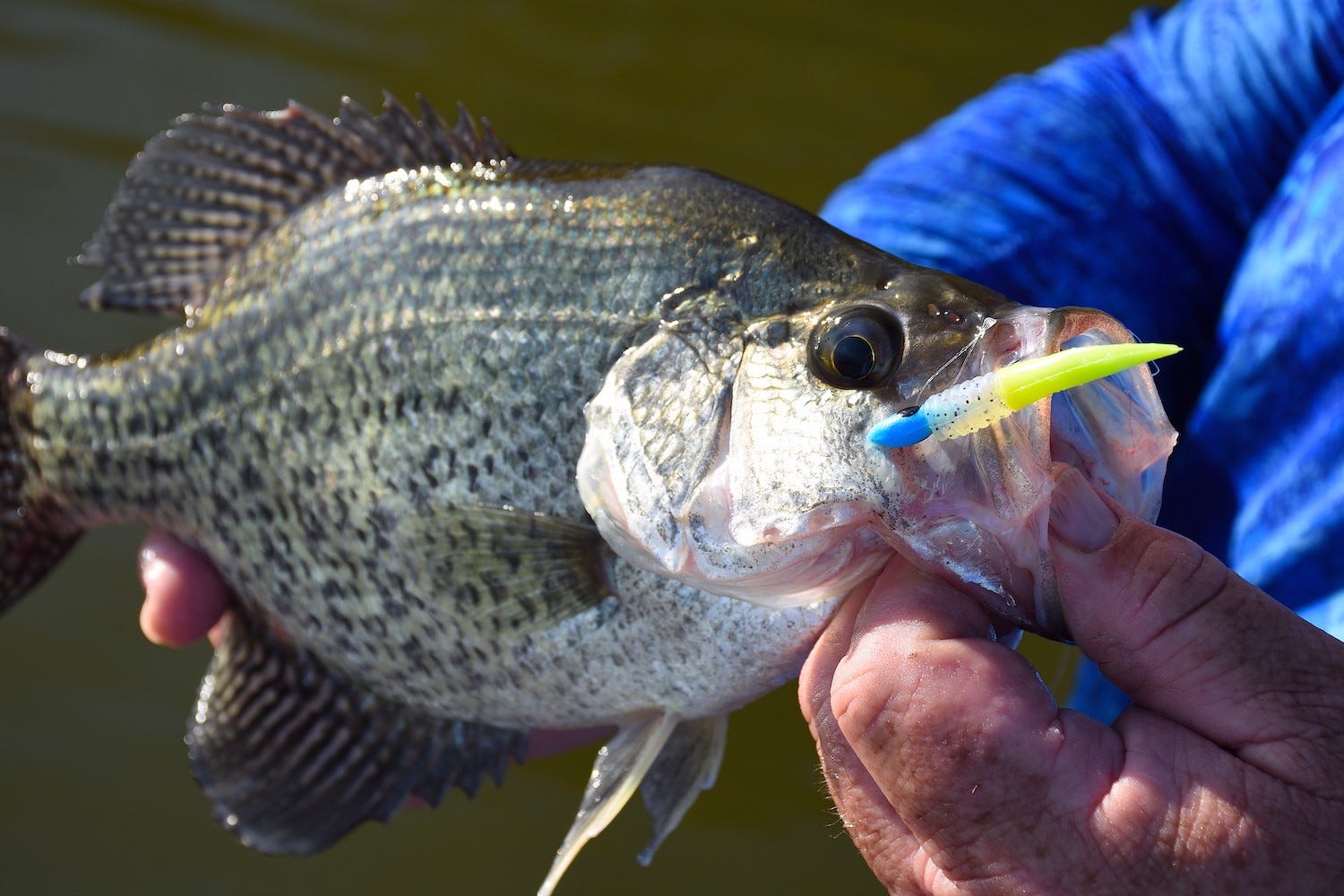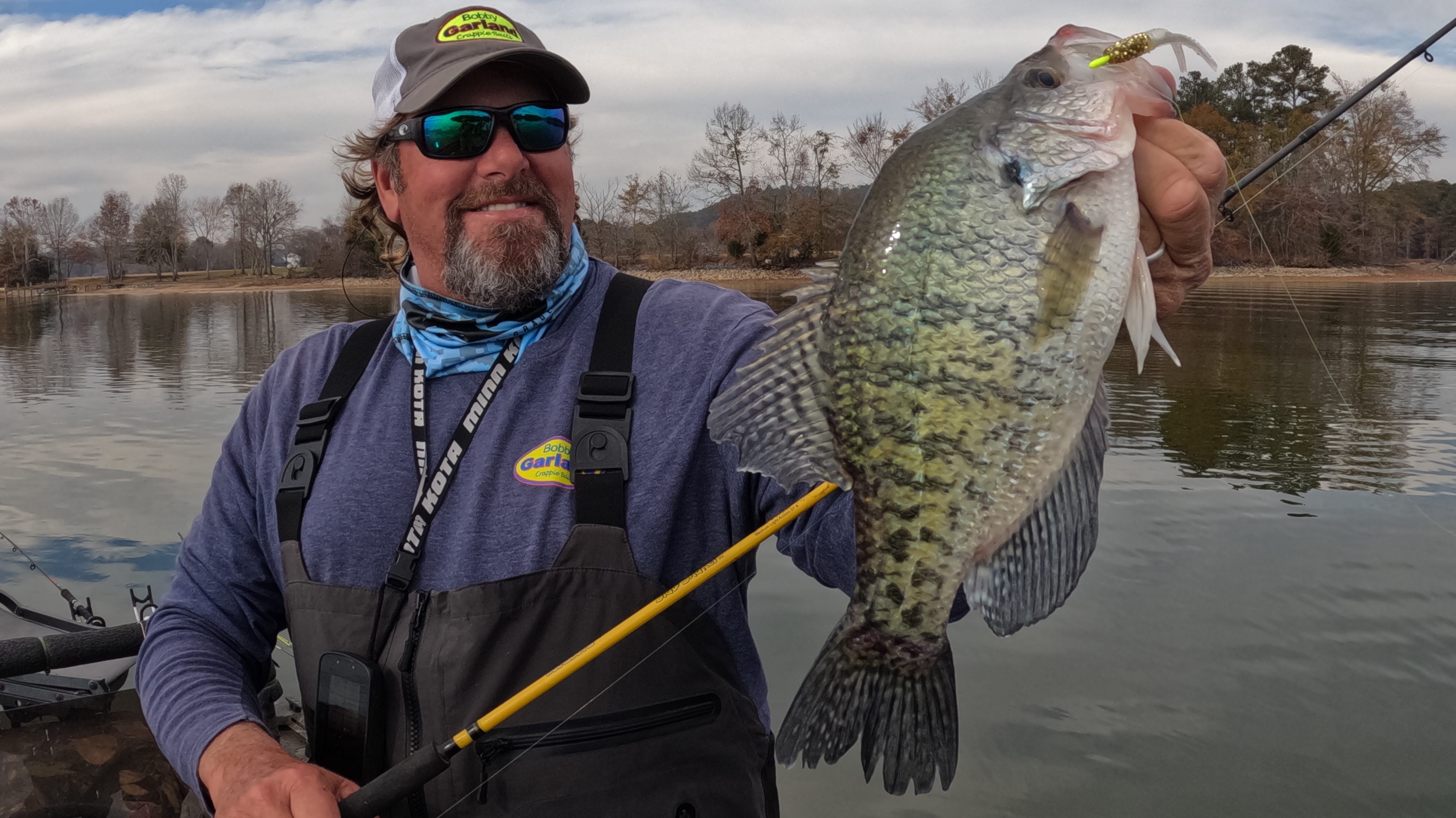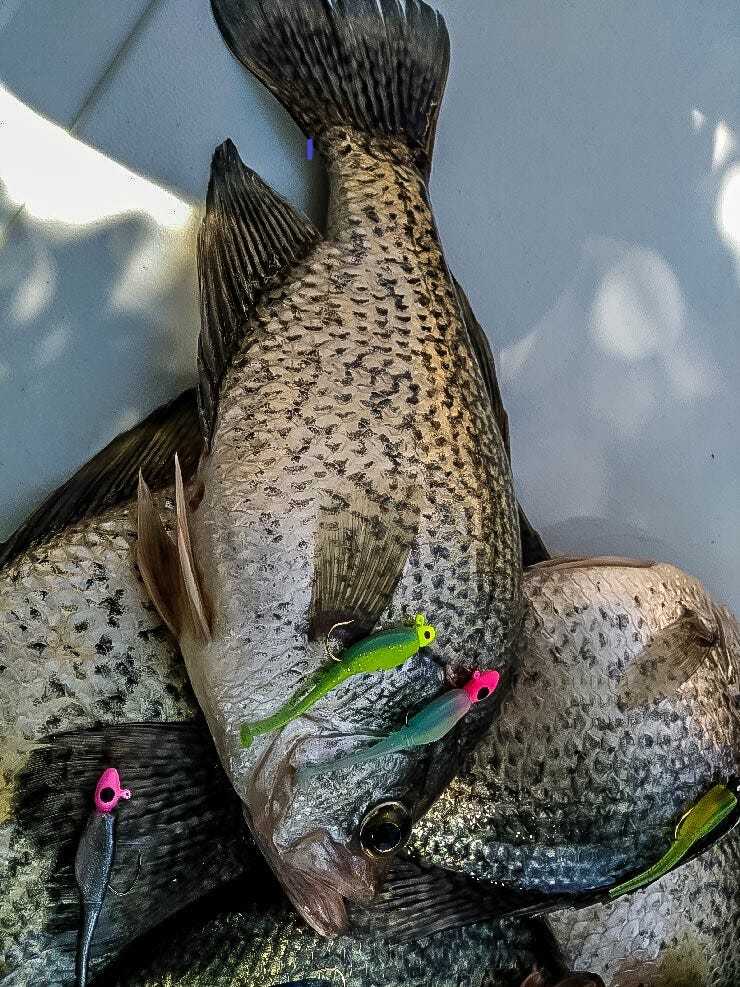- Jun 7, 2022
Learn How Crappie See
Understanding how crappie see things can help you make better lure selections and more effective presentations.
Reprinted with permission from In-Fisherman, the following excerpt about a crappie’s vision is taken from “Making Sense of Crappie Behavior,” an article written by Steve Quinn that appeared in the In-Fisherman 2015 Panfish Guide. We feel the timeless knowledge is a real eye-opener as to just how much crappie depend on sight for their feeding preferences, and therefore wanted to share the information again here.
(Text is exactly as it appears in the article. Photos courtesy of Bobby Garland Crappie Baits)
Making Sense of Crappie Behavior
Biological Keys to Triggering a Hot Bite
By Steve Quinn
Watching crappies move under water demonstrates their cautious deliberate style that makes, at times, for the fastest fishing imaginable. Other times they leave us baffled, wondering where they went or why they won’t bite.







